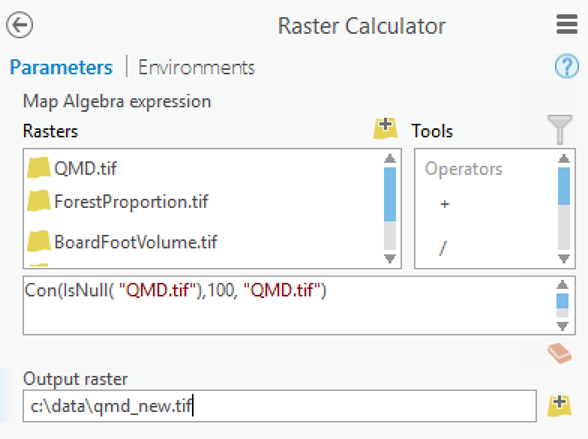You need to prepare your data for weighted overlay analysis. Weighted overlay services are based on raster layers. This means you may have to convert existing vector data to raster data. Before converting your data to a supported raster format, you need to verify each dataset's geometry. You should also project the data to a common coordinate system and clip your datasets to an area of interest. You can use the following tools to prepare your data:
- Run the Check Geometry tool to generate a report of the geometry problems in a feature class.
- Run the Repair Geometry tool to fix problems found by the Check Geometry tool.
- Optionally, run the Project or Project Raster tool to project all of your datasets to a common coordinate system.
- Optionally, run the Clip tool to extract features in your area of interest. This reduces the size of your rasters and may expedite configuration and processing times.
- The toolbox currently supports specific raster types, listed below. If you have an unsupported layer type, use one of the tools in the Conversion or Spatial Analyst toolbox to convert your data to a supported file type.
- Cloud Raster Format (CRF)
- Meta Raster Format (MRF)
- Cloud Optimized GeoTIFF
- TIFF
Note:
The tools that convert vector datasets to raster datasets require a cell size. If you use a common cell size for all rasters, your overlay analysis may be more accurate. You can calculate a cell size based on the extent of one of your datasets.
The following Python code sample calculates a cell size from a feature layer by finding the shortest extent dimension and dividing it by 250. You can run this from the Python window in ArcGIS Pro.
ext=arcpy.Describe("your-layer").extent
if ext.width < ext.height:
cellsize=ext.width/250
else:
cellsize=ext.height/250
print cellsizeFor each supported raster file, run the Build Pyramids and Calculate Statistics tools. This helps improve performance and accuracy of weighted overlay processing.
Manage NoData values
Raster datasets can contain areas without data known as NoData cells. NoData cells can alter overlays by masking cells beneath them. This has the effect of removing those raster cells from the analysis. You can calculate NoData cell values to another value using the Raster Calculator tool.
The following optional workflow demonstrates how to use the Raster Calculator tool to calculate NoData values to another value in an input raster dataset:
- Add your raster layer to a map in ArcGIS Pro.
- To visualize NoData cells in your raster dataset, do the following:
- Right-click your raster layer in the Contents pane.
- Click Symbology.
- Click the Mask tab and click the Nodata color picker drop-down arrow.
- Choose a color from the color picker to visualize the NoData cells.
The map display updates to symbolize the NoData cells using the color you chose.
- Open the Raster Calculator tool in the Spatial Analyst toolbox.
- In the Map Algebra expression text box, type the following expression: Con(IsNull("raster-layer-from-step-1"),no-data-replacement-value,"raster-layer-from-step-1").
- Browse to a file location to store your raster for the Output raster parameter.

- Click Run.
The Raster Calculator tool runs and writes a new raster dataset to the location you specified in the Output raster parameter.
You have prepared your data for use in a weighted overlay service.